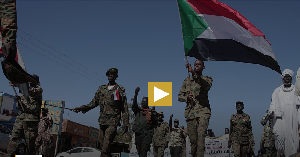IMANI’s 2016 Election Alerts-#1: Linking Poverty Alleviation to agricultural productivity- What the Political Parties Proposed in 2012 and what should guide them in 2016.
Sufficient progress has been made in reducing the incidence of poverty in Ghana since the early 1990s. Hitherto, one in two people were living below the poverty line whereas as of 2013 the figure has reduced to one in four.
The Millennium Development Goals have been useful in setting the global policy framework in driving the agenda and Ghana is proud to be one of few countries to attain the MDG goal of halving poverty.
But poverty is still a challenge and appears to be endemic amongst people who depend on agriculture as a primary source of occupation. Between 2007 and 2017, economic growth in Ghana averaged 7.2% of which agricultural sector growth was 3.5%.
Analysis by the AfDB shows that a growth of at least 7% is necessary for poverty alleviation. Following that logic, it is clear that poverty alleviation for those engaged in agriculture is lagging behind the rest of the country.
This inequitable distribution of wealth is one evidence of the growing inequality in Ghana. The Gini coefficient, another measure of inequality, shows deterioration from 37% in 1992 to 42.3% in 2013.
Heading into the next fifteen years of poverty reduction, with goals to end poverty in all its forms everywhere (SDG 1), it is crucial to look narrowly at agriculture and how it can contribute massively to ending poverty in Ghana.
Approximately 43.2% of the working population is employed in the agricultural sector. For the rural population in the three northern regions, agriculture makes up 90.1% of their employment. This is higher than national average where agriculture makes up 76.1% of rural households.
The incidence of poverty is highest in the three northern regions with Upper West being the poorest region. This demonstrates the strong linkage between agriculture and poverty in Ghana.
The majority of those who depend on agriculture as a source of livelihood are engaged in the occupation on a peasant and small-scale.
In addition, the sector is plagued with many challenges which include a low level of mechanization and adoption of technology, dependence on rain-fed agriculture, land tenure system, lack of interest in agriculture and low investment in agriculture.
There are also the problems with storage and poor management of post-harvest yields. Altogether, these have resulted in low yields, under cultivation of the land and lack of value/return for agricultural produce.
Given the strong linkage between poverty and agriculture, policies should be hinged on supporting a business model for agriculture (one that is not driven by subsistence) and also one that will address the global and national challenge of poverty and inequality.
Ghana has several advantages when it comes to agriculture. Firstly, the human capital exists; the evidence being the rampant unemployment amongst the youth in the country- to get trained to take advantage of this opportunity.
Secondly, the FAO estimates that only 43% of Ghana’s agricultural land area is under cultivation revealing another gap which has hampered growth in agriculture. Lastly, many of the national policies and political party pledges in 2012 emphasize the importance of irrigation to facilitate year-long farming.
Despite the perceived interest in irrigation, only 303.45km2 of agricultural land in Ghana, approximately 140,000 km2 is irrigated as of 2012.
There are plans by the Ghana Irrigation Development Policy to irrigate an estimated 5,000 km2. But should this target me met, the deficit in irrigated lands would still be at 96%?
From a technical standpoint, crops yields are consistently lower than achievable yields.
The gaps between actual and achievable are biggest for cashew, pepper, maize and yam and rice. The latter (rice) meets only 38.5% of its achievable target.
The Head of Rice Research and Development of the Savanna Agriculture Research Institute (SARI) of the CSIR is quoted in the Daily Graphic saying that the country is able to produce only 2,000 of the 20,000 metric tons of certified seeds required annually by farmers in Ghana.
The lack of certified seeds for cultivation is cited as one of the reasons for low yields. Therefore, scientific agriculture must be adopted into integrated development programs for agriculture.
The potential for supporting and developing agriculture are enormous. Given that a large share of the population is directly employed in agriculture, strategic investment in the sector will have a significant impact on poverty reduction and bring growth to the three northern regions in particular. While the agricultural sector has experienced a slump in GDP growth, the services sector has had the highest growth rate.
A report by the World Bank associates much of the growth in the other sectors of the economy to the shift out of agriculture. However, this shift may not be sustainable in the long term due to the pressures from urbanization on infrastructure and other social services and amenities.
Secondly, most of the groups existing agriculture are employed in the informal sector which also puts some of them at risk of falling into urban poverty.
Investment in agriculture is definitely not the sole means of reducing poverty, but given the nature of Ghana’s economy, the demography, and topography, agriculture could provide the results being sought. Political parties in Ghana recognize the importance of developing agriculture for economic prosperity and its direct links to poverty reduction.
Consequently, in their respective 2012 manifesto, the political parties made unique plans of how they would improve the sector. Heading into another election season, it will be important to review and revise these plans where necessary.
The NDC planned on agricultural modernization which they aimed to achieve through the expansion of National Service Scheme in food production.
Under this, the NSS personnel were to educate local farmers on the application of modern methods in food production. The NDC also emphasized in their plans the need for massive investment in the agricultural sector.
The NPP planned also for poverty alleviation through the transformation of agricultural and the developing of the three northern regions by the creation of employment.
The NPP planned on transforming the University of Development Studies into an academic center for excellence in agricultural and also the use of irrigation to revamp the agricultural sector to ensure all year around farming.
On agriculture, the CPP planned to provide accessible roads for the transportation of produced goods. The PNC on agriculture planned on the production of the food surpluses for exports and also ensuring that the people eat what they produce and the expansion of irrigational works and a railway network to aid in transportation, alongside an increase in cocoa production.
The PPP on agriculture planned on the use of science and technology to modernize agricultural to lift Ghana into a middle-income country through the provision of low-cost loans and technical assistance to those in the agricultural sector.
Several of the manifestos are similar in terms of their goals but do not create clear linkages between the how, when, who and where.
The time frame for the achievements of these goals and how these infrastructures and programs are to be funded are also lacking in these manifestos. Barring the weaknesses, agricultural mechanization proposed by all the parties is highly recommended in Ghana to help commercialize the sector.
And the use of mechanization centers should be prioritized considering the huge investment required and the skilled labor required in operating the machinery. In addition, one of the best innovations in agriculture at the moment is the ongoing establishment of the Ghana Commodity Exchange Project.
The GCX is expected to be operational by mid-2016. The earnest pursuit of this project is highly recommended as it solves several of the broken linkages in the agriculture value chain.
The GCX will offer guaranteed assurances of reasonable prices for farmers’ crops, reliable delivery, and a trouble-free payment system, as well as storage and warehouse facilities.
Scientific agriculture should also be pursued to set the farmers up for higher yields from day one. There should be greater accountability in the distribution of fertilizer under the subsidy scheme. Simple systems, for example, a voucher system can be introduced. In the case of irrigation, due to the huge investments required for irrigation, a mix of private and public investments may be ideal.
In preparing their respective manifestos, political parties should move away from endless lists but rather focus on the answers to the specific questions of what, when, and how. These details are what will differentiate one party manifesto from the other.
Opinions of Friday, 1 July 2016
Columnist: IMANI Ghana















